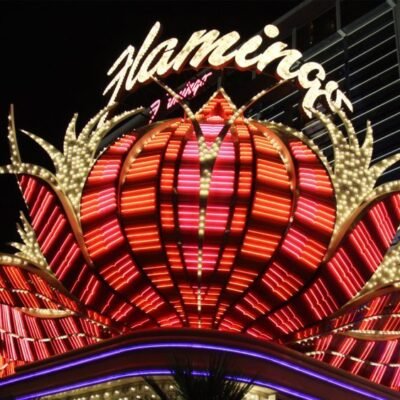LAS VEGAS (KLAS) — In 1953, the townsfolk of Pittman, Nevada, were forced to make a decision that would haunt them for decades amid crime, growth, and industry; remain independent or merge into Henderson.
According to Mark Hall-Patton, retired museum director for The Clark County Museum, the representatives from Henderson, known as the Basic Township, were in a poor bargaining position right from the start when they approached the neighboring Pittman.
“Three-quarters of the people in Henderson left [in 1944], and Henderson almost went away,” he said. “Pittman was still doing just fine.”
What made Henderson unique was its occupants were adamant about becoming an incorporated city—following the threat of becoming army surplus—but they didn’t have enough landowners.
“But the people in Pittman already owned their property,” Hall-Patton said. “In order to incorporate the people in ‘Old Town Henderson’ had to get the people in Pittman to become part of Henderson.”
The inhabitants of Pittman had their own separate, cultural identity and benefited from area attractions like a restaurant run by one of the biggest names in American Olympic gold medal history, Jim Thorp.
“He came to Pittman and set up a restaurant there in April of 1952,” Hall-Patton said. “He had a massive heart attack in August of 1952 and realized he couldn’t continue to run his restaurant there.”
Under pressure, Pittman’s residents agreed to become a part of the new City of Henderson, gaining a seat on the city council. The decision would ultimately lead to Pittman’s fall to obscurity and Henderson’s rise to the second-largest city in Nevada.
The defrocked lawyer and well-digger
In 1917, three men standing in the Mojave Desert discovered a deposit of manganese and turned it into an open-pit dig site, called Three Kids Mine. The material was used in weapons and equipment during the U.S. effort in World War I. However, one year later the war ended, and demand slumped which subsequently slowed activity in the area.
B.R. Jefferson, one of the founders of Three Kids Mine, sought to take advantage of the recently signed Pittman Act and decided to develop land eight miles west of his mine. The town was named after the legislation’s namesake, Nevada Senator Key Pittman.
“Now, in order to take up the land there, you had to dig a well and bring in crops,” Hall-Patton said. “[Jefferson] hired a lawyer here in Las Vegas by the name of T. Alonzo Wells, who was a defrocked lawyer from Orange County, California.”
Wells agreed to dig the well for the quaint town and began planting crops on the evenings and weekends with his wife.
“[Wells] did so in the 1920s, brought in 20 acres of crops, grapes, sunflowers, and walnuts,” Hall-Patton said. “He brought in 20 acres. Proved that he could do that. That got them 640 acres of land for free under this Pittman Act.”
Because Jefferson never paid Wells, the well digger freely received the land and subdivided it with the plan to start selling it off.
“But in the 1920s there wasn’t a lot of interest in the land,” Hall-Patton said. “There was some he was able to sell, a little bit of it, but most of it he held on to until people started needing land for housing.”
However, driving up the meandering road alongside Pittman an entirely new type of businessman was interested in opening in the area — bootleggers.
“This was during Prohibition, and it was mainly people who were building bars in the area,” Hall-Patton said.
“The Shambles”
By the 1930s other areas began to take shape within the area known as Pittman including Midway, Jericho Heights, Dog Patch (currently Jokers Wild Casino), and St. Anne.
“In most cases, they were basically not communities, but they were businesses,” Hall-Patton said. “Dog Patch, that was an area that had the Victory Bar, the Sportsman’s Bar, and the House of Price, which was a cut-rate furniture store. Why it was called ‘Dog Patch,’ I’ve never been able to figure it out.”
In 1931, the area was given a new connection to the growing city of Las Vegas and Boulder City with the repaving of the meandering state route which locals called “The Shambles,” known more widely as Boulder Highway.
“Boulder Highway, when it was first paved, was called ‘The Shambles’ because it was a blood alley,” Hall-Patton said. “It was one of the most dangerous roads.”
A local favorite among the dangerous drivers was Parker’s House of Memories, a bottle house, which when customers knocked on the door only had to spend a few cents before some made the life-altering decision to drive drunk, attempting to make it to work at the under-construction Boulder Dam.
“All of a sudden it became a place that people wanted to build businesses on,” Hall-Patton said. “It became a place that people were buying properties from [Wells], building businesses along there, others moved out there and started building some housing, and it turned into a little community.”
Pittman wrestled with the obstacles of drunk drivers, Prohibition, and water security through the decade but ended the 1930s stronger with six more water wells.
“[Wells] gave those wells to the community,” Hall-Patton said.
However, something caught the attention of the residents of Pittman. On the horizon of the new Boulder Highway, an innovative development would become the area’s greatest salvation and death knell — Henderson.
Swanky Club
In 1941, crews for Basic Magnesium Incorporated cleared and graded a 5,000-acre site for a company town, which would build and supply magnesium for bombs and airplane parts for the U.S. war effort during World War II, three miles south of Pittman.
“All the land in Henderson was owned by Basic Magnesium, not owned by the people who were living there,” Hall-Patton said. “It was making magnesium, not manganese — that was the Three Kids Mine.”
Basic Townsite quickly exploded with growth reaching around 13,000 workers at its height throughout the area, becoming one of the largest magnesium plants in the world. The chance for work and amenities led to the creation of a bowling alley, theater, hospital, and smorgasbord of restaurants. Pittman was still able to hold its own with the plant workers visiting Frankie Carr’s Swanky Club (located at 920 N. Boulder Highway) and Midway Casino.
“Everybody went to Pittman in order to go eat,” Hall-Patton said. “But still people thought of themselves as being in Henderson, except they were in Pittman.”
In 1943, the residents of Basic Townsite added the finishing touches to their post office which was dedicated two months later in honor of U.S. Senator Charles B. Henderson who also financed the building of the plant, and the “Henderson” name resonated. However, the town would face a hardship already hard learned by Three Kids Mine when a war is over.
“In 1944 Basic Magnesium was shut down,” Hall-Patton said.
For nine years Henderson became a shadow of its golden era, as the residents of Pittman continued to progress with an active Women’s Club, street names/numbers, and a mail delivery system.
“They were really working to upgrade the community,” Hall-Patton said. “Because they really had a sense of themselves as their own community.”
By early 1953 Henderson’s infrastructure was falling apart and city services extended to the area by Clark County were due to lapse by July. If Henderson wanted to incorporate it needed more people for maintenance, workforce, and taxes. Henderson turned its eager eyes back in the direction of Pittman and the town that predated the area conceded.
“Without Pittman, we wouldn’t have had a Henderson,” Hall-Patton said.
‘Ongoing issues’
The honeymoon period of Henderson’s incorporation was short-lived Within a few months of the swearing-in of Dr. Jim French as the first mayor, the residents of Pittman were already having doubts.
“Even though it became a city in April of 1953 by September of 1953 Pittman tried to pull away to disincorporate as part of Henderson,” Hall-Patton said. “There were problems for many years as to whether or not Pittman would stay as part of Henderson.”
By 1954 Pittman saw some benefits from incorporation with the installation of utility poles and the construction of the Pittman Community Center.
For decades Pittman struggled to remain separate from the City of Henderson. In 1974, Pittman’s separate post office would close dismantling a key part of the community’s identity. The Pittman Community Center would become the target of vandals, and one of the neighborhood’s grocery stores, Dick’s Market, would be burned to the ground, only Country Cousins remained (later known as Rancho Market).
The fall of Pittman would culminate in the chambers of Henderson City Hall with the passing of an ordinance, perceived as a slight against the elder community.
“Pittman had a member on the city council, but only one,” Hall-Patton said. “The city council in Henderson passed an ordinance and said, ‘We won’t have any bars and we won’t have any gaming in Henderson, except on Boulder Highway.’”
Whether intended or not, the ordinance was seen as an attack on Pittman, but there was little option for the town.
“That basically all the bars and gaming was going to be in Pittman,” Hall-Patton said. “Pittman was a little upset about that. ‘What do you mean? You guys aren’t going to have any bars. We already have bars. You’re going to have all of that in our area. That’s not right.”
Slowly Pittman fell into obscurity as Henderson took new form in the 1990s with the development of the Green Valley masterplan community.
In 2024, Hall-Patton said not much still exists from the original site of Pittman except for a few namesakes like Wells Park, Price St. (presumably named after the House of Price furniture store), and a few names etched in the sidewalk. The growth of the Cadence masterplan community now poses the next threat to the identity of Pittman.
“You look at Cadence today, and it’s just, it’s huge,” Hall-Patton said.
Hall-Patton said development or growth is not necessarily bad but it’s important to remind residents of the history.
“As with any place, you need to have a sense of a community’s background,” he said. “You really shouldn’t forget that this was its own community, even though it’s now part of Henderson.”
Proof of Pittman
On June 10, 2023, the Queho Posse Chapter 1919, in cooperation with Jim Marsh, placed a historical marker for Pittman in the parking lot of Skyline Casino.
The inscription of the Pittman, Nevada historic marker reads in part as follows:
“Pittman began as an informal housing area along the newly built Boulder Highway about 1930. It was first known as Jericho Heights, and later as St. Ann and Midway City. In 1942, the community was named for Senator Key Pittman, who had died five days after being re-elected to the U.S. Senate for the sixth time. The unincorporated community boasted gas stations, bars, grocery stores, casinos and clubs, and starting on July 3, 1942, its own post office. When Henderson wanted to incorporate in 1953, it did not have enough land owners, and had to absorb Pittman into the new city to succeed.”










